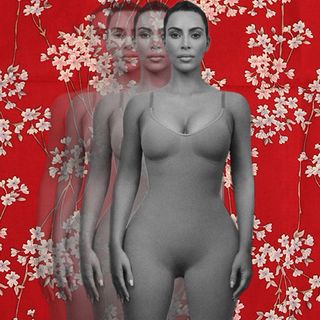
Brownface in ‘Super 30’ Reveals Bollywood’s Structural Racism
If dark-skinned actors were allowed to play lead roles, Bollywood wouldn’t have to resort to racist make-up.

Bollywood has a diversity problem: the industry discriminates against women based on their age, unfairly favors young actors from legacy families — and sidelines dark-skinned actors into supporting roles. While the homogenization of artists in Bollywood, and the racism that underlies it, will render itself apparent to anybody paying close attention, its most recent manifestation is obvious in its hilarious absurdity: the brownface.
Brownface is when fair-skinned actors (Bollywood seldom allows any other kind to flourish) are made up to look browner than they are, in order to lend authenticity to characters from the middle- to low-income classes that they play. It happened to Ranveer Singh’s Murad in Gully Boy, to Alia Bhatt’s Bauria in Udta Punjab, and most recently, to Hrithik Roshan portraying Bihari mathematician-turned-teacher, Anand Kumar, in the upcoming film based on true events, Super 30. In the trailer released in June, Roshan is seen adopting a (terrible) Bihari accent, and what looks like mud plastered on his face, making his skin tone two to three shades darker than it actually is. What’s funny is Kumar in actual life isn’t even as dark (and certainly neither dirty nor unshowered-looking) as Roshan is in the film.
The practice of darkening fair-skinned actors to enable them to portray dark-skinned characters is emblematic of Bollywood’s racism and classism; the idea is rooted in stereotypes that dark skin signifies poverty, lower class and lower caste. On the other hand, filmmakers often cast white actors in lead roles and pass them off as Indian: Brazilian model Giselle Monteiro as Harleen Kaur in Love Aaj Kal, or European Elli Avram who played Kamayani George in Mickey Virus. The divide created between fair-skinned and dark-skinned characters in movies often reflects the divide between rich and poor on the screen. This notion, borrowed from and reflective of Indian society’s obsession with fair skin and all the judgment that comes with not having it, further solidifies the association of dark skin with less socio-economic capital in viewers’ psyches.
Normalizing depictions of dark-skinned characters who are poor prevents the industry from glamorizing dark-skinned actors. Sure, filmmakers need “star” actors to up the glamor of the film, which is maybe why they needed a big name like Roshan to be the lead — but then, the solution isn’t brownface. It’s: let a more diverse-looking pool of actors become stars.
While filmmakers routinely make blockbuster films about dark-skinned characters, they don’t let actors with the skin tone participate in their own representation. This forces excellent actors who don’t fit the industry standards for glamor to exist in the shadows, watching on as a select, privileged handful don brownface and play a variety of roles.
The movie industry’s tendency to exclude actors from lead roles on the basis of their skin color completely ignores their talent. In Super 30, Kumar could have been played by a multitude of excellent actors who more closely resemble Kumar in skin tone, such as Pankaj Tripathi (who is actually a secondary character in the film). Instead, filmmakers helicoptered in Roshan, who doesn’t look (or seem to convincingly act) like the real-life person he is playing. Sadly, actors like Tripathi have always been sidelined to make way for less-talented, ‘hero’-looking actors, simply because they don’t fit Bollywood’s, and by extension society’s, idea of a movie lead.
Take Nawazuddin Siddiqui, for example — the man spent his entire life trying to enter Bollywood; he constantly speaks about the obstacles he faced as a dark-skinned, not-‘hero’-material actor. It took him decades to graduate from small, background roles to commanding his own films with his unparalleled acting skills. Still, Siddiqui has been very vocal about how he doesn’t have a ‘”good face,” and he gets how that can be a deterrent for casting directors to give him lead parts in mainstream films. Super 30 serves as the perfect example of Bollywood’s gatekeeping: dark-skinned actors can’t play “heroes” because they don’t look like them — and they also can’t play characters they actually look like.
Related on The Swaddle:
Editorial: I’ll Take Door Number Three, Please
This isn’t a problem unique to Bollywood. Groups in power altering their skin tones to look like, and be representative of, other groups for entertainment, has been normalized since the time of minstrel shows in the United States. White people put on black paint and glorified dehumanized portrayals of black people, solidifying existing racist notions in the American culture of the 19th and 20th centuries. What it did was ingrain implicit and explicit bias in American minds, which has fueled widespread discrimination against black people to this day, David Leonard, chair of Washington State University’s department of critical culture, gender, and race studies, told Vox. Normalization of such stolen representation dupes audiences into thinking the media they’re consuming is diverse, but in reality, it’s a privileged person in disguise, portraying “everything but the actual person, the community, and the culture,” Leonard said. And while the history of minstrelsy in the U.S. is not comparable to Bollywood’s relationship with class and caste divides in Indian society, portrayals of marginalized groups in contemporary media take on similar themes: incomplete, inadequate and incorrect depictions of certain groups, who are also actively being kept out of participating in the discussion surrounding their own portrayals in popular culture — like in Super 30.
Films that hinge on brownfacing mainstream actors not only do great injustice to the darker skinned artists in the industry, but also reinforce inequities deeply ingrained by society. Instead of looking at Bollywood as a business making money from holding up a mirror to society, we need to see it as the cultural influencer it is, and ask industry mainstays to reckon with the responsibility that comes with the power.
Rajvi Desai is The Swaddle's Culture Editor. After graduating from NYU as a Journalism and Politics major, she covered breaking news and politics in New York City, and dabbled in design and entertainment journalism. Back in the homeland, she's interested in tackling beauty, sports, politics and human rights in her gender-focused writing, while also co-managing The Swaddle Team's podcast, Respectfully Disagree.
Related


Small Talk: Big Kids
